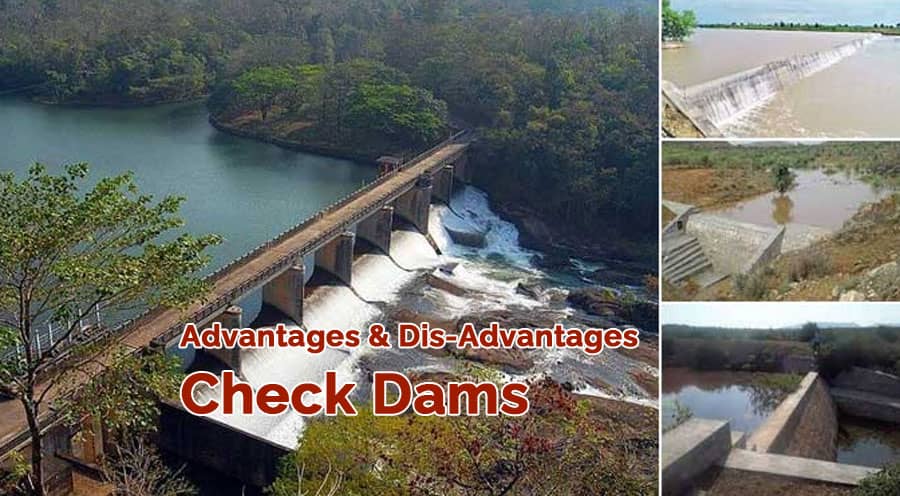Importance of the Construction of the Check Dams

A Dam is a natural or man-made structure built across a large water body to hold the water back and prevent it from flowing and can be used to store water, prevent flooding and generate electricity.
What are Check Dams?
Check dams are generally small dams constructed across drains, ditches, swale channels, or waterways to lessen the total velocity of the water flow and prevent soil erosion. Check dam construction is an old way of storing rushing water in a specific location.
Stone, sandbags filled with pea gravel, or logs can all be used to construct a check dam. Cement concrete check dams, boulder check dams, and gabion check dams are the three types of check dams that are generally used.
Why may Check Dams be used?
Check dam helps to collect water in a particular area by stopping the flow of water from passing through a channel, stream, or other waterways. This water storage enhances surface water penetration into groundwater through rainfall and reduces erosion by retaining transported sediments and inhibiting downstream transit.
Check Dams may be used in the following cases:
- In order to reduce flow in small temporary pipes that are currently degrading,
- Because of the transient nature of the problem, permanent stabilization is not possible.
- For the reduction of flow in small eroding channels that can't be lined on a timely basis due to delays in construction or weather conditions.
Advantages of using Check Dams
- It is inexpensive and easy to install.
- Reduces water velocity and may provide aeration.
- In addition to preventing gully erosion before vegetation has been established, check dams also cause a high proportion of sediment load in runoff to settle out.
- These check dams can sometimes be left as permanent installations with just little regrading, etc., provided they are appropriately positioned and planned.
- They can be used as a spillway, with deposited material graded and seeded, or as check dams to catch sediment flowing away from the site.
Disadvantages of using Check Dams
- Many of these measures are ugly due to their temporary nature, and they should be removed or changed to permanent check dams before homes are rented or sold.
- Depending on the type of check dam built, removal may be costly.
- Check dams may only be used in a small drainage basin.
- If the water level remains high after rainstorms or if there is extensive sedimentation, grass linings in channels may be killed.
- Reduce the channel's hydraulic capacity.
- It's possible that turbulence will occur, causing the channel banks to disintegrate.
- In the fall, leaf clogging might be an issue.
Ideas for the construction of Check Dams
- Rock, sandbags filled with pea gravel, or logs can be used to build check dams. Set up a sump upstream right away.
- The maximum distance between the dams should be so that the upstream dam's toe is at the same level as the downstream dam's top.
- To obtain complete coverage of the ditch or swale and to guarantee that the centre of the dam is lower than the margins, the rock must be put by hand or mechanically (do not dump rock to construct the dam). Given the predicted design flow through the channel, the rock selected must be big enough to stay in place.
- Log check dams should be made with 4 to 6-inch diameter logs that are at least 18 inches deep in the soil.
- Check dams must be removed from grass-lined ditches and swales once the grass has developed enough to protect the ditch or swale unless the slope of the swale is more than 4%. Following the removal of the check dams, the land beneath them must be planted and mulched.
To learn more, watch the following video tutorial.
Video Source: The Audiopedia
